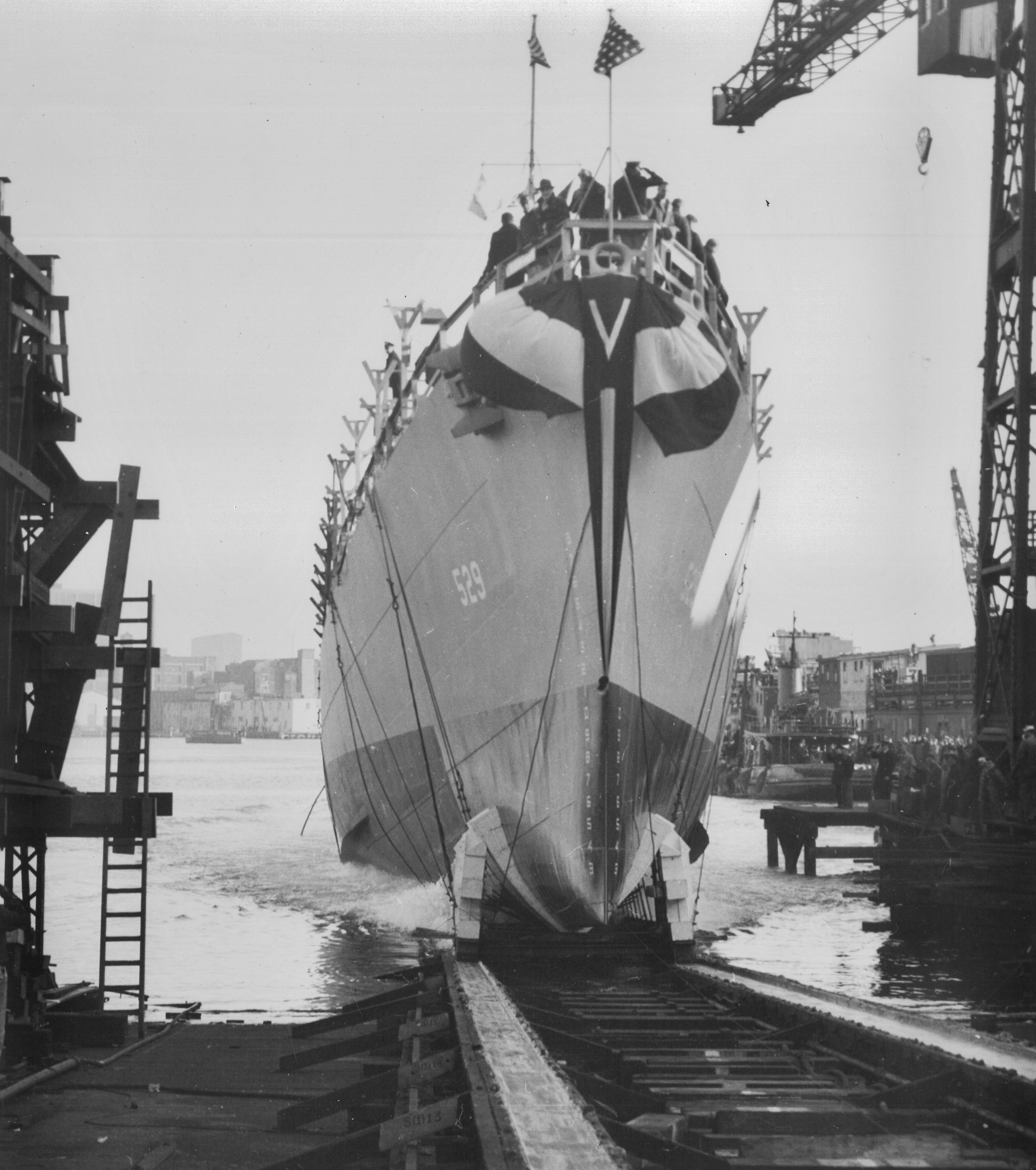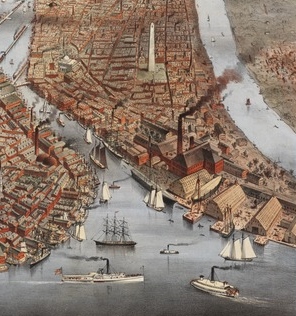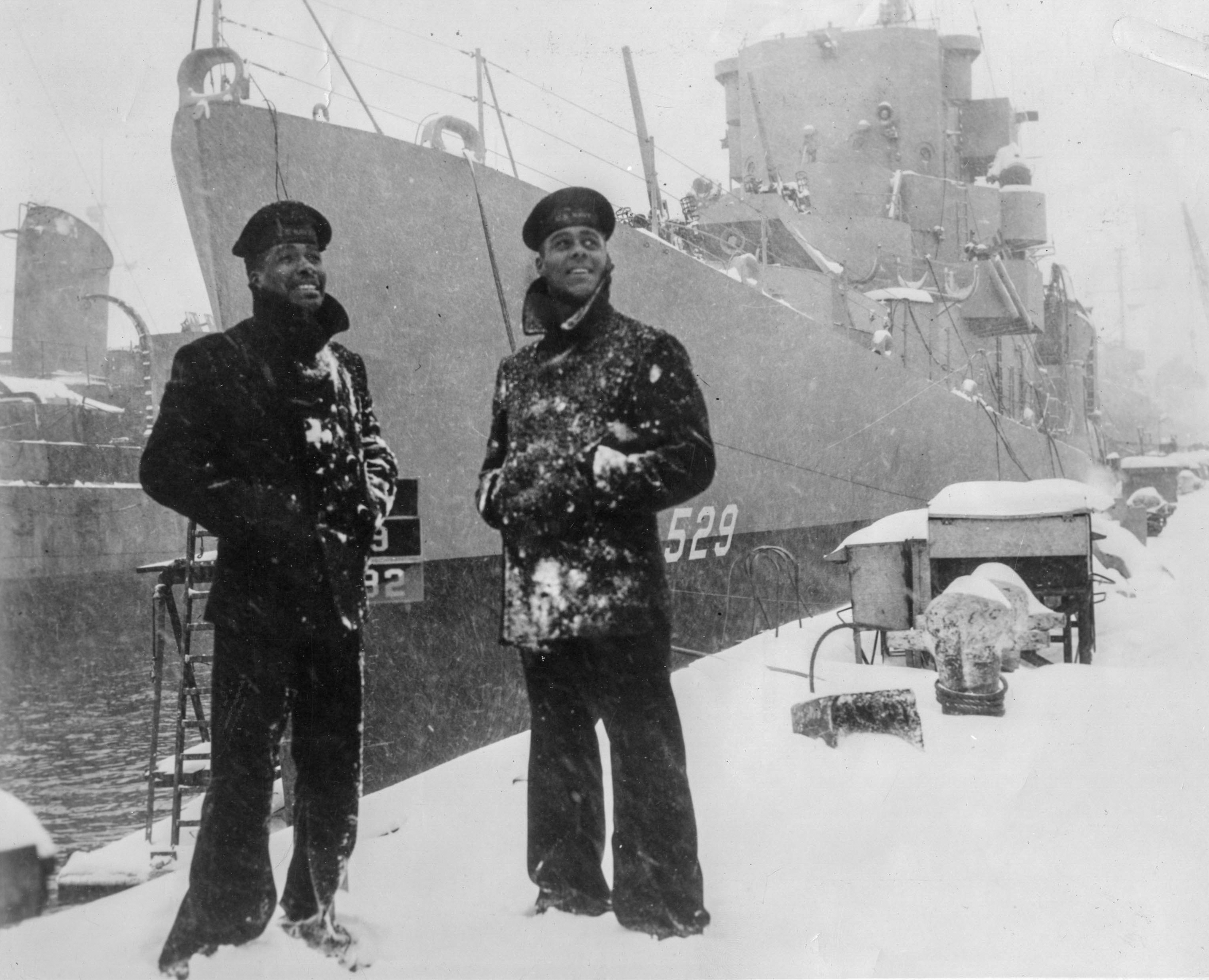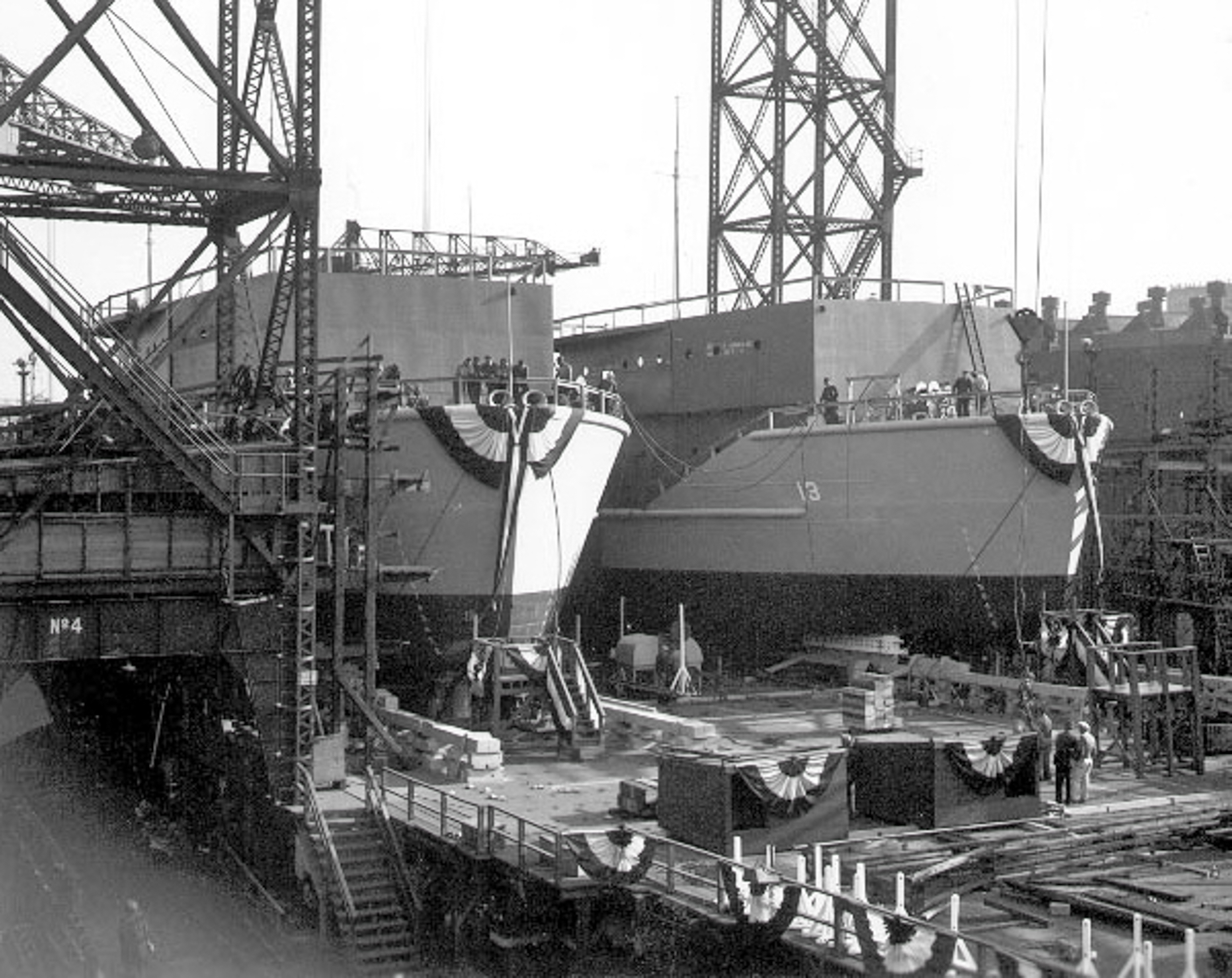Navy Shipbuilding Site
in Charlestown
November 1943, destroyer escort U.S.S. Mason was launched from the Shipways. Her crew helped change the U.S. Navy.
Courtesy of the National Park Service
Visible below is Shipways 1; the wooden remains are testament to the extraordinary war-time shipbuilding effort in the Charlestown Navy Yard. In the 1930s, midst rising tensions in Europe, the U.S. Navy ordered the Navy Yard to pivot from ship repair to ship construction. Workers lengthened and widened Shipways 1 so two vessels could be built side-by-side. In 1941, Shipways 2 was added alongside, further accelerating production. Destroyers, destroyer escorts, dock landing ships, tank landing ships—all slid off these Shipways.
U.S.S. Mason (DE 529) was among the 45 vessels built on Shipways 1 and 2 during World War II. It was the first of only two U.S. warships during that war manned by a predominantly Black crew who served in positions ranging from radiomen and sonar operators to machinists and gunners. For years, the Navy had limited Black men to serve as cooks and stewards aboard ships. The U.S.S. Mason crossed the Atlantic eight times, protecting convoys transporting vital supplies. The crew spurred changes in the Navy.
In July 1948, President Harry Truman’s Executive Order #9981 abolished discrimination in the United States Armed Forces.
Sign Location
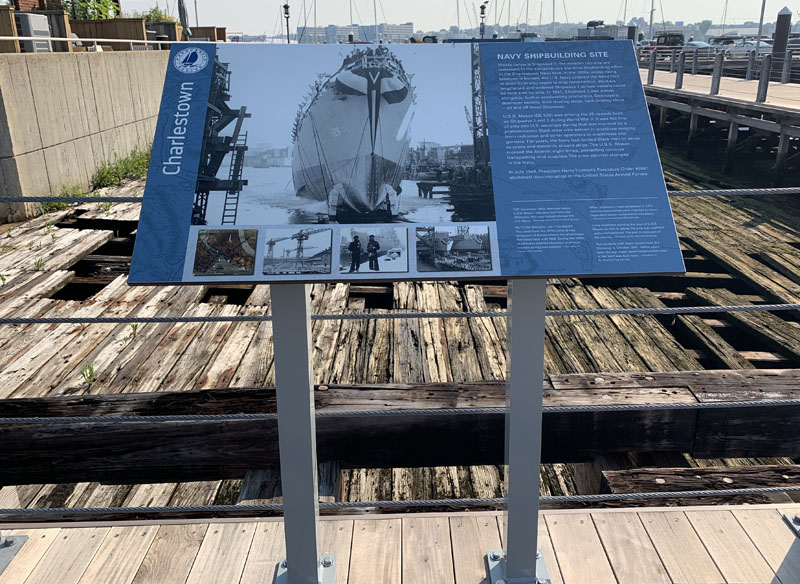
More …
Resources
- Carlson, Stephen P., Charlestown Navy Yard Historic Resource Study. Vol 1 – 3. Boston National Historical Park, 2010.
- Charlestown Navy Yard. National Park Handbook. Produced by the Division of Publications National Park Service, 1995.
- Kelly, Mary Pat. Proudly We Served: The Men of the U.S.S. Mason. Naval Institute Press, 1995.
- For more about the Navy Yard during World War II
- For more about U.S.S. Mason
- https://www.navy.mil/submit/display.asp?story_id=5704
- https://rediscovering-black-history.blogs.archives.gov/2015/07/23/uss-mason-uss-pc-1264-and-the-all-african-american-crews-during-world-war-ii/
- https://www.usni.org/magazines/naval-history-magazine/2015/february/our-scope
- https://www.midway.org/blog/the-uss-mason-another-step-in-wartime-desegregation/
Acknowledgments
- Our gratitude to the Perkins School for the Blind and David W. Cook for their partnership in creating the audio files.
- Thank you to David Henderson and Stephen Carlson of the National Park Service for their expertise and support.

